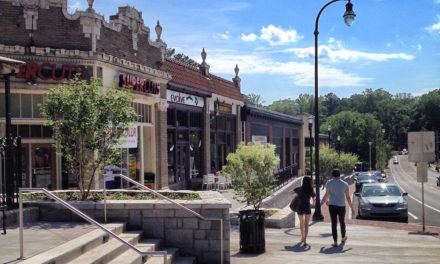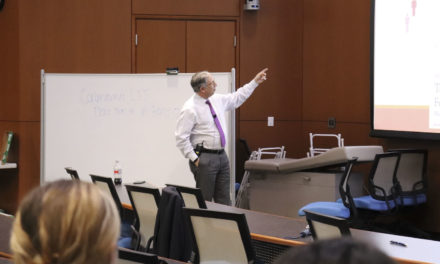The chicken wasn’t the only thing that sustained damage after the Clairmont Tower fire that started in a student’s oven on Sept. 30. In the aftermath of the accident, Clairmont administrators have contended with a barage of maintenance issues including elevator outages, a lengthy fire alarm malfunction in the Clairmont Residential Center (CRC) and water damage in some apartments.
Following the fire, Clairmont residents received an email from Assistant Director of Clairmont Campus Elizabeth Cox who explained that although no one was injured, the sprinkler activation led to centralized water damage to the 12th, 13th and 14th floors. Campus Services accessed some of the apartments the next day to begin repair and restoration, but Cox assured students that they would receive notification.
“We certainly regret the inconvenience this incident has caused for residents,” Director of Residence Life Andy Wilson wrote in an email to the Wheel. “The health and safety of our community remain the top priority for the university.”
Cox explained that the Clairmont Tower fire alarm system operates as a high rise system, which differs from other buildings because it is not set up to put the entire building into immediate alarm. When an alarm is initiated, only the floor where it was initiated, the floor above, and the floor below go into immediate alarm. This trigger begins evacuation from the affected area and five minutes later the rest of the building should go into alarm if the system has not been reset.
Director of Fire Safety, Bridget Mourao, wrote in an email to the Wheel that the fire alarm system operated appropriately by activating on the 13th, 14th and 15th floors. After a period of time, it was supposed to trigger the whole building alarm but that did not happen until the pull system was activated on the 7th floor.
Mourao said that the alarm system was evaluated for proper sequencing and serviced immediately following the incident.
“During the evaluation, it was determined that the whole building alarm should have sounded prior to the activation of the pull station,” she wrote. “The programming and timing was adjusted and it has been tested to ensure that it is working properly.”
Wilson explained that once Residence Life receives the final report regarding the incident, they will assess whether any changes are “deemed necessary to enhance the health and safety of our residents.”
In her email to the Clairmont residents, Cox explained that residents directly affected by the fire and water damage would be communicated with on an individual basis.
However, College senior Elizabeth Scott said she remains frustrated with how little was communicated to her following the fire.
“I had not been notified that they would be tearing up my walls and rearranging my stuff,” Scott said. She explained that when she came back to her apartment, five industrial fans lined the room and her electricity was not working.
“They picked up all my belongings, expensive clothes and shoes and basically threw them across my apartment,” Scott said.
As a disabled student, Scott said she was also disappointed with the maintenance uptake of the elevators, which forced her to walk up numerous flights of stairs to reach her apartment. Cox maintained in her email letter that Clairmont immediately contacted Campus Services to get the appropriate repair person on site as quickly as possible.
Wilson explained that residents requiring assistance should contact the Residence Advisor On Call and added that directions to do so are posted throughout the residential community.
College sophomore Brielle Scully said that while she personally has not experienced any maintenance issues, she lived with the constant and annoying hum of dehumidifiers as a result of water damage on her hallway.
Although she commended Clairmont administrators on their prompt notification to residents, she said she was “greatly disappointed by the accommodations” provided for those residents who were not permitted to stay the night in their own rooms.
“I felt as though hotels should have been provided, especially seeing as how Emory tuition is so high,” said Scully, who was one of the students who needed alternative accommodation the night of the fire.
Recently, Cox sent out another email to Clairmont residents listing the repair updates and fire alarm system information.
Cox wrote that dehumidifiers are still in some hallways and apartments and added that maintenance will continue to enter apartments and do repairs.
“Fire safety and prevention remain a top priority at Emory,” Mourao wrote. “We will continue to work with Campus Life and Resident Life to promote fire safety education and training in that community.”
Fire Safety Educational Training programs are available free of charge online.
– By Roshani Chokshi
The Emory Wheel was founded in 1919 and is currently the only independent, student-run newspaper of Emory University. The Wheel publishes weekly on Wednesdays during the academic year, except during University holidays and scheduled publication intermissions.
The Wheel is financially and editorially independent from the University. All of its content is generated by the Wheel’s more than 100 student staff members and contributing writers, and its printing costs are covered by profits from self-generated advertising sales.





